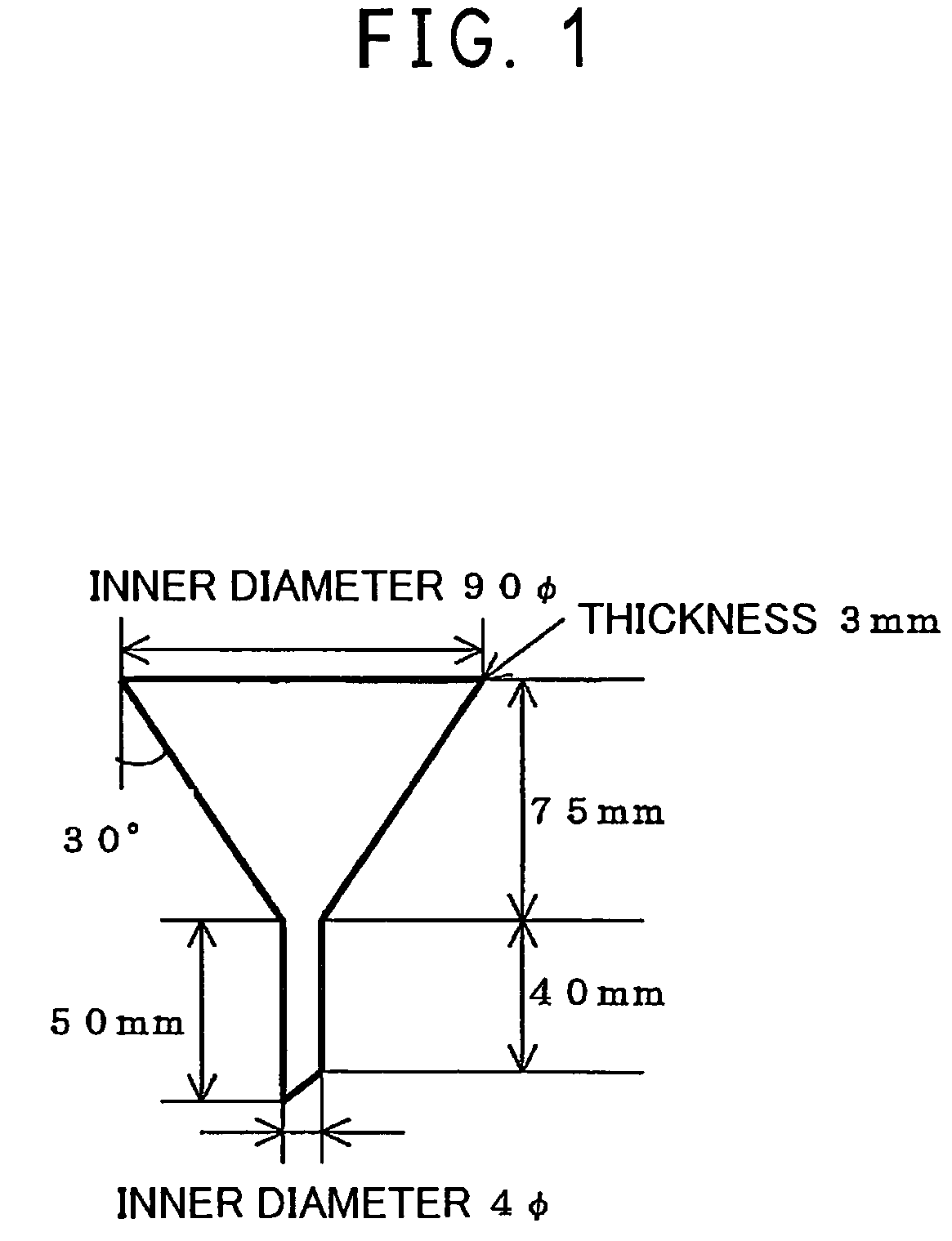Process for preparing vinyl chloride copolymer resin
a vinyl chloride and copolymer resin technology, applied in the field of preparing vinyl chloride copolymer resin, can solve the problems of increasing scales in the polymerization reactor, hardness of vinyl chloride resin, etc., and achieve the effect of excellent polymerization stability
- Summary
- Abstract
- Description
- Claims
- Application Information
AI Technical Summary
Benefits of technology
Problems solved by technology
Method used
Image
Examples
preparation example 1
[0077]CuBr (5.54 g) was put into a 2-liter separable flask equipped with a reflux tube and a stirrer, and the reactor was purged with nitrogen. Acetonitrile (73.8 ml) was added thereto, and stirred in an oil bath at 70° C. for 30 minutes. N-butyl acrylate (132 g), methyl 2-bromopropionate (7.2 ml) and pentamethyldiethylenetriamine (4.69 ml) were added thereto, and the reaction was initiated. While stirring with heat at 70° C., n-butyl acrylate (528 g) was continuously and dropwisely added over 90 minutes, and further stirred with heat for 80 minutes.
[0078]The reaction mixture was diluted with toluene, and passed through an active alumina column, and then the volatiles were evaporated away under reduced pressure to obtain poly(n-butyl acrylate) having a Br group at one end.
[0079]Methanol (800 ml) was fed into a flask and cooled to 0° C. Potassium t-butoxide (130 g) was divided into a few portions and added intermittently. The reaction solution was kept at 0° C., and a methanol soluti...
preparation example 2
[0082]A poly(n-butyl acrylate) macromonomer having an acryloyl group at one end having a number average molecular weight of 6,000 and a molecular weight distribution of 1.14 was obtained in the same manner as in Preparation Example 1, except that the amount of methyl-2-bromopropionate used in Preparation Example 1 was 14.4 ml.
example 1
Process for Preparing a Vinyl Chloride Copolymer Resin by Microsuspension Polymerization:
[0083]A 15-liter stainless steel polymerization reactor equipped with a jacket and a stirrer was degassed, and 99.95 parts of a vinyl chloride monomer was fed thereinto. Then, 0.05 part of the poly(n-butyl acrylate) macromonomer having an acryloyl group at one end in Preparation Example 1 was fed. For the purpose of dispersing and mixing the macromonomer in the vinyl chloride monomer, hot water was led through the jacket to increase the inner temperature of the polymerization reactor up to 30° C., and the contents in the reactor were stirred at a rotation speed of 200 rpm for 1 minute. Water was led through the jacket so as to cool the inside of the reactor to 20° C. or lower, and 0.07 part of 2,2′-azobis-(2,4-dimethylvaleronitrile) and 1.4 parts of stearyl alcohol were added thereto, and homogenized for 2 minutes. Then, an aqueous solution (300 parts) in which 1.16 parts of sodium laurylsulfate...
PUM
| Property | Measurement | Unit |
|---|---|---|
| temperature | aaaaa | aaaaa |
| glass transition temperature | aaaaa | aaaaa |
| molecular weight distribution | aaaaa | aaaaa |
Abstract
Description
Claims
Application Information
 Login to View More
Login to View More - R&D
- Intellectual Property
- Life Sciences
- Materials
- Tech Scout
- Unparalleled Data Quality
- Higher Quality Content
- 60% Fewer Hallucinations
Browse by: Latest US Patents, China's latest patents, Technical Efficacy Thesaurus, Application Domain, Technology Topic, Popular Technical Reports.
© 2025 PatSnap. All rights reserved.Legal|Privacy policy|Modern Slavery Act Transparency Statement|Sitemap|About US| Contact US: help@patsnap.com

